Essential Tips for Effective Watering Pot Plants While Away
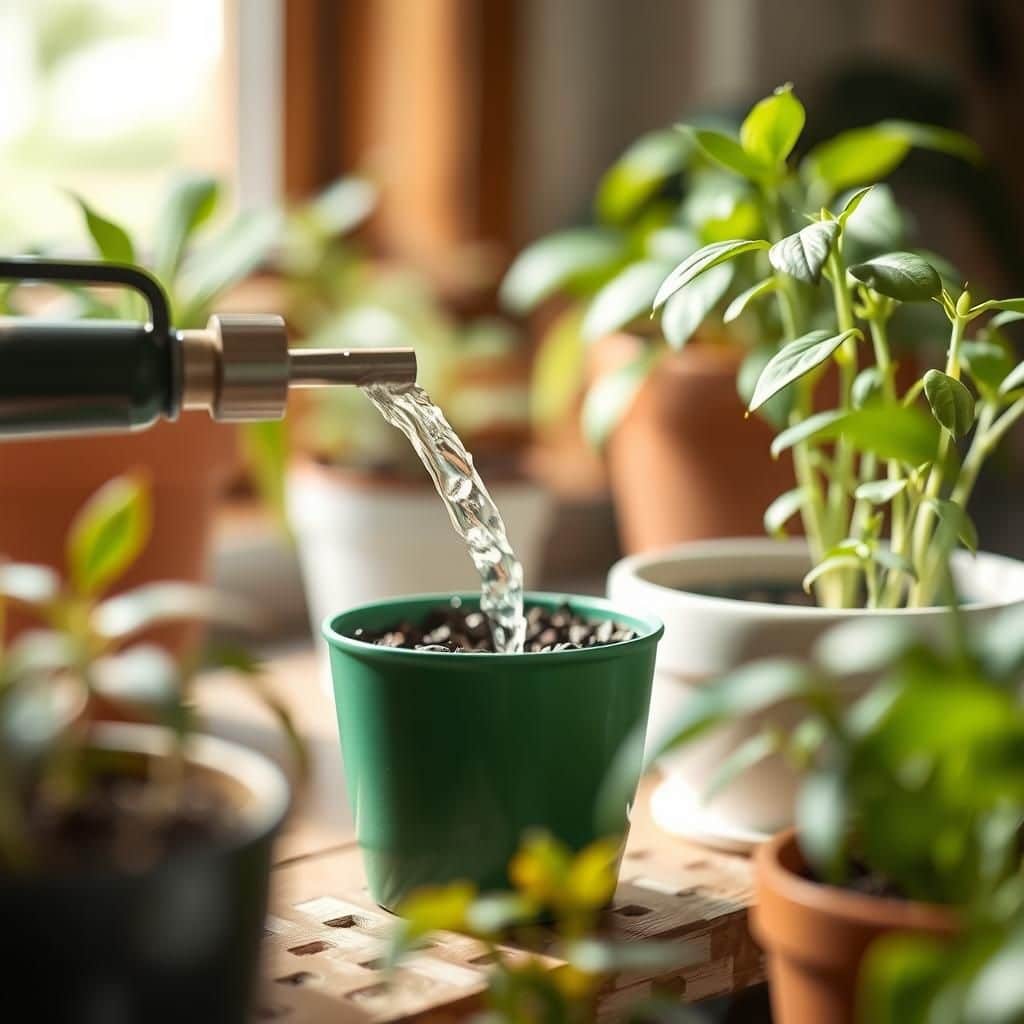
As the warmth of summer approaches or during long-awaited vacations, many plant enthusiasts worry about the well-being of their indoor greenery. Proper watering is crucial for keeping potted plants healthy, especially when you're away. However, with thoughtful planning and a few essential tips, you can ensure your plants receive the right amount of moisture without your constant supervision. This article will explore effective strategies for watering pot plants while you're away, including techniques for sustained hydration and tools to help maintain your plant's health. With a little preparation, you can enjoy your time away without concern for your leafy companions.
Effective Strategies for Watering Pot Plants While Away
When planning to be away from home for an extended period, it's crucial to consider the hydration needs of your pot plants. One effective strategy is to thoroughly water your plants just before leaving, ensuring the soil is moist but not overly saturated. Additionally, using self-watering systems or sub irrigation can significantly reduce the frequency of watering needed. Placing pots in a shaded area can help minimize water evaporation, while grouping plants together can create a microclimate that retains moisture. Lastly, asking a friend or neighbor to check on your plants or investing in a moisture-sensing device can ensure that your plants remain healthy and hydrated during your absence.
Using Self-Watering Pots
Self-watering pots are designed with a reservoir that allows plants to absorb water as needed, making them ideal for those who travel frequently. These pots often contain a wicking system that pulls moisture up from the reservoir, maintaining consistent soil moisture levels without the risk of overwatering. As a result, your plants can thrive for days or weeks while you are away, alleviating the need for additional care. This self-sufficiency is beneficial for maintaining healthy root systems and preventing plant stress that often occurs during periods of drought.
Creating a Wick System
A simple yet effective method to keep your pot plants watered while you're away is to create a wicking system. This involves inserting a length of cotton or nylon cord into the soil of the pot, with the other end placed in a water container nearby. The capillary action will draw water up to the soil, keeping it adequately hydrated. This method is particularly advantageous for smaller pots or when you're away for short periods. It's an economical solution that minimizes the risk of root rot caused by overwatering while ensuring your plants receive the moisture they need.
Grouping Plants Together
Grouping your plants together before leaving can create a more humid environment, which is beneficial for their overall health. When plants are in close proximity, they can create a microclimate where moisture is retained due to reduced airflow. This technique also helps to shield them from direct sunlight, which can accelerate evaporation. Additionally, the leaf transpiration from grouped plants can contribute to maintaining humidity levels, ensuring that each plant has a better chance of surviving your time away without requiring external watering.
Implementing a Drip Irrigation System
A drip irrigation system is an efficient way to ensure your pot plants receive water during your absence. This system delivers water directly to the base of each plant through a series of hoses and emitters, reducing waste and promoting deep root growth. By programming the system to release a specific amount of water at designated intervals, you can maintain optimal soil moisture levels while you are away. This method also lessens the risk of overwatering, which can be detrimental to plant health.
Regularly Checking Soil Moisture
Before leaving, it's essential to check the soil moisture levels of your pot plants. You can do this by feeling the top layer of soil; if it feels dry, your plants may need additional watering. Employing a moisture meter can provide more precise readings, allowing you to determine whether your plants are adequately hydrated. Additionally, amend soil with moisture-retentive materials like vermiculite or coconut coir can improve the soil's ability to retain water, ensuring your plants stay healthy longer when you're away.
| Method | Effectiveness | Time Away |
|---|---|---|
| Self-Watering Pots | High | 1-2 weeks |
| Wicking System | Medium | Up to 1 week |
| Grouping Plants | Medium | Up to 1 week |
| Drip Irrigation | High | Indefinite |
| Soil Moisture Check | Low | 1-2 days |
How to water potted plants while away on vacation?
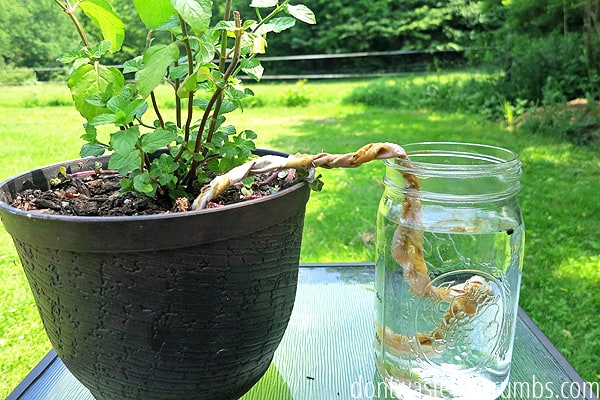
To ensure your potted plants remain healthy and well-watered while you're away on vacation, there are several methods you can employ. Here’s a comprehensive guide on how to manage their watering needs effectively.
Automatic Watering Systems
Using an automatic watering system is one of the best ways to ensure your plants receive consistent moisture while you’re away. These systems can be set up to provide a scheduled supply of water to your plants.
- Drip Irrigation: This system delivers a slow, steady flow of water directly to the roots of your plants, minimizing waste and evaporation.
- Timer Systems: You can connect a timer to your hose or drip irrigation system to automate watering based on a schedule.
- Smart Irrigation Controllers: These can be adjusted via smartphone apps and can respond to weather changes to optimize watering.
Self-Watering Pots
Another effective solution is to use self-watering pots. These containers are designed to keep soil moist for extended periods.
- Water Reservoir: Self-watering pots have a built-in reservoir that allows plants to draw water as needed.
- Soil Moisture Regulation: They typically feature a system that helps regulate moisture levels, ensuring your plants receive just the right amount.
- Variety of Designs: They come in various styles and sizes to accommodate different plant types and aesthetics.
Watering Globes
Watering globes are a simple, inexpensive way to keep your plants hydrated during your absence. These glass or plastic devices slowly release water into the soil.
- Easy to Use: Fill the globe with water, then insert it into the soil of your potted plant.
- Consistent Moisture: The globe regulates the flow of water, allowing it to seep into the soil as it dries out.
- Decorative Element: Many watering globes are designed to be aesthetically pleasing, adding charm to your plants.
DIY Watering Methods
If you prefer to create your own watering solutions, there are multiple DIY methods you can consider.
- Wine Bottle Method: Fill a wine bottle with water, turn it upside down, and bury half of it in the soil. The water will slowly seep out.
- Capillary Matting: Place a strip of capillary matting in a container of water and position one end in the pot's soil to draw moisture up gradually.
- Plastic Bottle Drip System: Puncture holes in a plastic bottle, fill it with water, and insert it upside down into the soil to create a slow drip system.
Pre-Vacation Preparation
Lastly, preparing your plants before you leave can help them survive longer without needing water.
See also: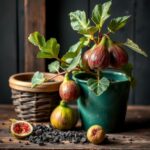
- Soil Type: Use moisture-retaining soil or add materials like coconut coir or peat moss to help retain moisture.
- Pruning: Trim any dead or excess leaves, as this reduces the plant's water requirement.
- Grouping: Group plants together, as this can create a more humid microenvironment, reducing their overall water loss.
How long can outdoor potted plants go without water?

The duration outdoor potted plants can go without water largely depends on a variety of factors including the type of plant, the environmental conditions, and the size of the pot. Generally speaking, most outdoor potted plants can survive without water for about 3 to 7 days under suitable conditions. However, this period can be significantly shorter during hot weather or if the plant is in a smaller pot.
Factors Affecting Water Requirements
Different factors influence how long potted plants can endure without watering:
- Plant Type: Some plants are more drought-resistant than others. Succulents and cacti require less frequent watering compared to tropical plants.
- Weather Conditions: High temperatures, wind, and direct sunlight can cause soil to dry out more quickly, reducing the time plants can go without water.
- Soil Type: Well-draining soil dries out faster than clay or heavy soils that retain moisture. Potting mixes can vary greatly in terms of moisture retention.
Signs of Water Stress
It's essential to recognize the signs that your potted plants might be stressed from lack of water:
- Wilting: Leaves may droop or lose their firmness, indicating the plant is thirsty.
- Leaf Color: Leaves may turn yellow or brown, particularly at the tips, signaling dehydration.
- Soil Condition: Dry, cracked soil can be an indication that the plant has not been watered for an extended period.
Best Practices for Watering Potted Plants
To ensure your outdoor potted plants thrive, consider these best practices:
- Check Soil Moisture: Use your finger to test the soil moisture about an inch deep before watering.
- Watering Technique: Water thoroughly until it drains from the bottom, ensuring that the roots absorb adequate moisture.
- Time of Day: Water in the early morning or late afternoon when temperatures are cooler to minimize evaporation.
How to Conserve Water for Outdoor Plants
If water conservation is a concern, you can implement various strategies:
- Mulching: Add a layer of mulch on top of the soil to help retain moisture and reduce evaporation.
- Grouping Plants: Planting in clusters can help create a microenvironment with higher humidity, reducing overall water needs.
- Self-Watering Pots: Consider using pots designed to provide a steady supply of moisture to plants.
Special Considerations for Different Seasons
The season can significantly alter water needs for potted plants:
- Summer: High temperatures increase evaporation, requiring more frequent watering.
- Winter: Many plants enter dormancy and require less water, but caution is necessary not to let the soil dry out completely.
- Spring and Fall: Plants may need moderate amounts of water as they actively grow and adjust to changing temperatures.
How do I find someone to water my plants while on vacation?
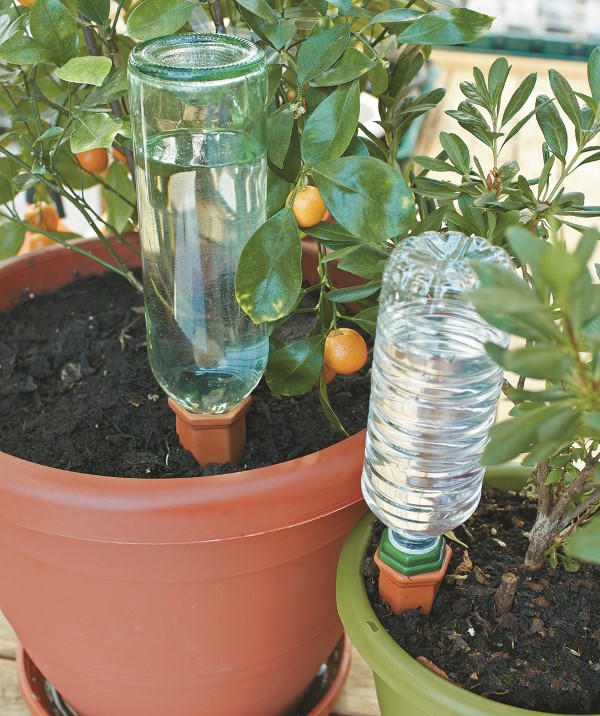
To find someone to water your plants while on vacation, consider the following steps:
1. Reach out to Friends and Family: Your immediate circle could be the best option for plant care. They are often trustworthy and likelihood is they are already familiar with your plants.
2. Use Social Media: Post on your social media platforms asking if anyone would be interested in taking care of your plants during your absence. You might be surprised by the responses from acquaintances.
3. Hire Professional Services: Look for local services that specialize in pet sitting or house sitting, many of which offer plant care as part of their packages.
4. Community Boards or Flyers: Check out community boards in local grocery stores or libraries, or consider posting your own flyer.
5. Apps and Websites: There are many websites and mobile apps designed for finding local help for various services. Look for platforms that connect homeowners with local helpers.
See also: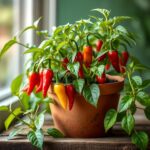
Ask Friends and Family
One of the simplest and most reliable options is to ask friends and family members if they would be willing to help. Familiar faces are often more comfortable handling your plants, and they might even have experience caring for them. To ensure everything goes smoothly, consider providing them with instructions.
- Make a list of your plants and their specific needs.
- Provide any required tools, such as watering cans or fertilizers.
- Set clear communication about when to water and how much to give each plant.
Another effective way to find someone is to leverage social media. By posting a quick note on platforms like Facebook or Instagram, you can tap into your network. Not only will you likely get immediate responses, but you might find someone who genuinely enjoys taking care of plants.
- Write a clear request outlining the dates you will be away.
- Specify the kind of plants you have and their care requirements.
- Encourage friends to share your post for wider outreach.
Professional Plant Care Services
Hiring a professional service can provide peace of mind. There are numerous companies that specialize in plant care, which can ensure your plants receive proper attention. This option can be convenient, especially if you have many plants or special requirements.
- Search for local companies that offer plant-sitting services.
- Read reviews and check credentials to ensure reliability.
- Ask for pricing and what their service entails.
Community Boards and Flyers
Utilizing community boards can be a great way to connect with local plant lovers. Posting a flyer in places like coffee shops or community centers can attract individuals who are experienced and eager to help.
- Design an informative flyer with your needs and contact information.
- Be clear about the duration and responsibilities of the task.
- Consider offering compensation or trades for their service.
Apps and Websites for Finding Help
There are many digital platforms available that specialize in finding local services. Apps and websites designed for homeowners can connect you with potential helpers experienced in plant care.
- Look for platforms where users can list their needs, like TaskRabbit or Rover.
- Read profiles and reviews of potential helpers.
- Ensure to discuss your plants’ needs before finalizing anyone.
What's the longest plants can go without water?
:strip_icc()/17-drought-tolerant-houseplants-you-cant-kill-edit-09e606d9797140a982de29576b9a9268.jpg)
The duration that plants can survive without water varies significantly among different species. Most plants can endure dry periods, but the limits differ based on their adaptations, environmental conditions, and the growth stage of the plant. In general, many plants can survive for a few days to several weeks without water under optimal conditions. However, some resilient plants, particularly succulents, can endure drought for months, and even years in extreme cases.
Adaptations of Drought-Resistant Plants
Plants that survive long periods without water often possess specific adaptations that enable them to minimize water loss and maximize water retention. These adaptations include:
- Thick Cuticles: A waxy layer that reduces evaporation.
- Deep Root Systems: Roots that extend deep into the ground to access underground moisture.
- Water Storage Organs: Structures like succulent leaves or stems that store water for long periods.
Impact of Environmental Conditions
The surroundings in which a plant grows can heavily influence its ability to withstand drought. Key factors include the following:
- Temperature: Higher temperatures can increase evaporation rates, making water scarcity more profound.
- Humidity: Low humidity levels can lead to quicker water loss through transpiration.
- Soil Type: Sandy soils drain water quickly, while clay soils retain moisture longer, affecting water availability.
Stages of Plant Growth
A plant's ability to survive without water can change at different growth stages. Key stages include:
- Seed Stage: Seeds can remain dormant for extended periods without water until conditions are favorable for germination.
- Juvenile Stage: Young plants often require more frequent watering compared to mature plants.
- Mature Stage: Established plants develop adaptations that allow for longer periods of drought tolerance.
Examples of Drought-Tolerant Plants
Certain plants are renowned for their remarkable ability to survive without water. Here are some examples:
- Cacti: Highly adapted for desert conditions; can store water in their tissues.
- Aloe Vera: Succulent with thick leaves that store moisture.
- Agave: Uses specialized tissues to retain water, thriving in arid environments.
Signs of Water Stress in Plants
Understanding the signs that a plant needs water can help in maintaining its health. Some indicators include:
- Wilting: Leaves may droop or become limp due to lack of moisture.
- Leaf Curling: Leaves may curl inward to reduce surface area and water loss.
- Color Changes: Foliage may turn yellow or brown as the plant begins to stress.
Questions from Our Readers
How can I water my pot plants while I'm away for a week?
To ensure your pot plants receive enough moisture while you're away for a week, consider using a self-watering system or watering globes that release water gradually. Alternatively, you can place your pots in a basin of water before leaving, allowing the plants to absorb water through the drainage holes.
What are the best self-watering options for potted plants?
The best self-watering options include self-watering pots that have a reservoir at the bottom, wick systems that draw water from a container, and drip irrigation systems that can be set up with a timer. These solutions help maintain consistent moisture levels, reducing the stress on your plants.
See also: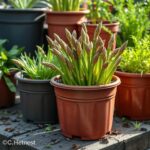
How do I set up a DIY watering system for my plants?
You can create a DIY watering system using a bottle with small holes in the cap buried upside down in the soil or a soaked rope that sits in a container of water and leads into the pot. These methods allow water to flow slowly into the soil, keeping your plants hydrated while you're absent.
Can I use ice cubes to water my plants while I'm away?
Yes, using ice cubes can be an effective method to water your plants gradually. Simply place a few ice cubes on the soil surface, and as they melt, they will release moisture slowly over time, ensuring that your plants receive a continuous supply of water without overwhelming them.

If you want to read more articles like Essential Tips for Effective Watering Pot Plants While Away, we recommend you check out our Pots category.
Leave a Reply
Related Articles